What Is a Backward Pass in Project Management?
What Is a Backward Pass in Project Management?
A backward pass in project management is a technique used to move through a project network diagram. The backward pass identifies your late start and late finish values, so that you can understand the project’s duration and eventually find the critical path.
There is both a backward and forward pass in project management. So, if you’re not already familiar with the forward pass, start there as that’s what you’ll do first.
As with the forward pass, you and your team are tackling a project that has five different tasks (A, B, C, D, and E). You know each task’s predecessors as well as how long each one should take:
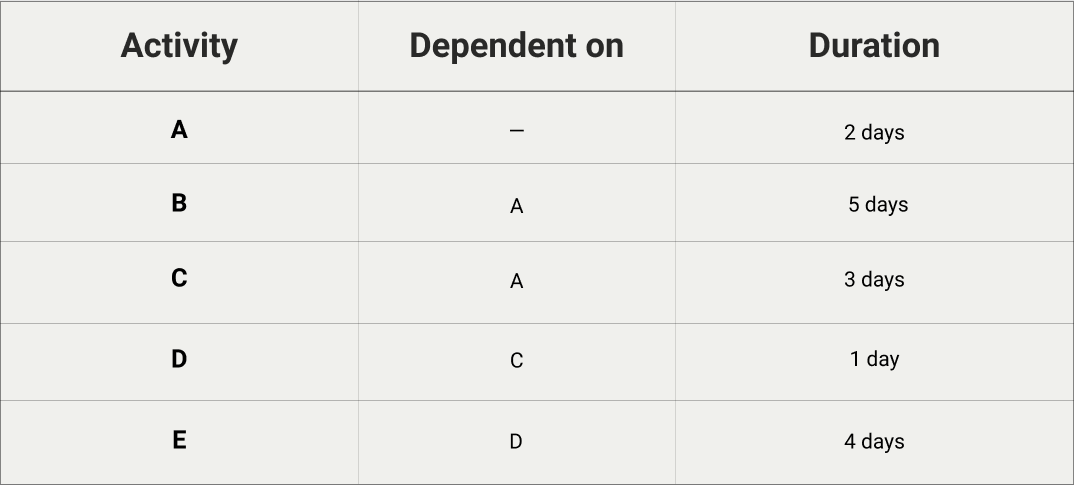
You’ve used that information to create a rough network diagram that shows the general flow of your project activities, which looks like this:
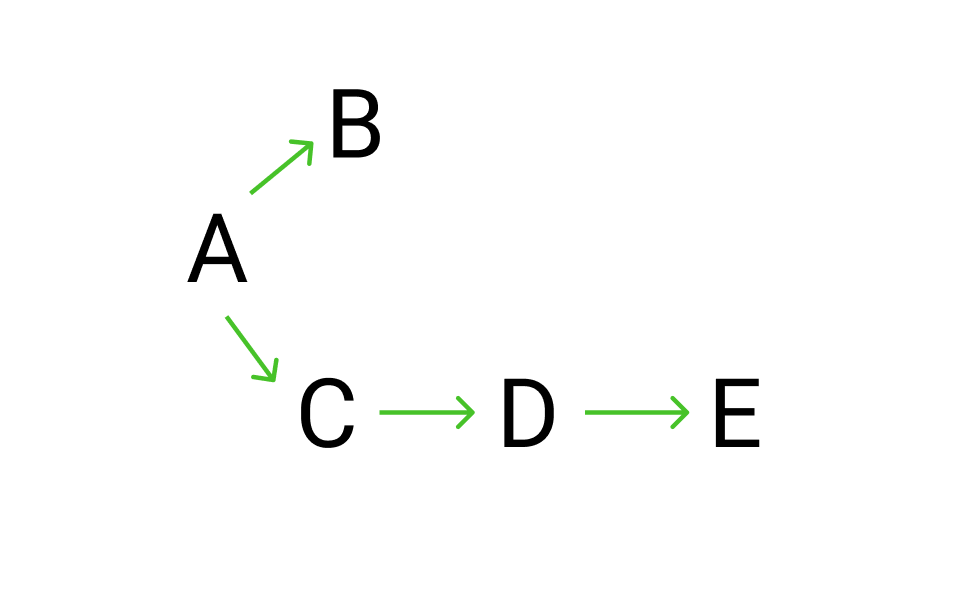
Using that as your guide, you then created your grid for each activity, entered the task and its duration into each center box, and then completed the forward pass to understand the total project duration. You now have a diagram that looks like this:
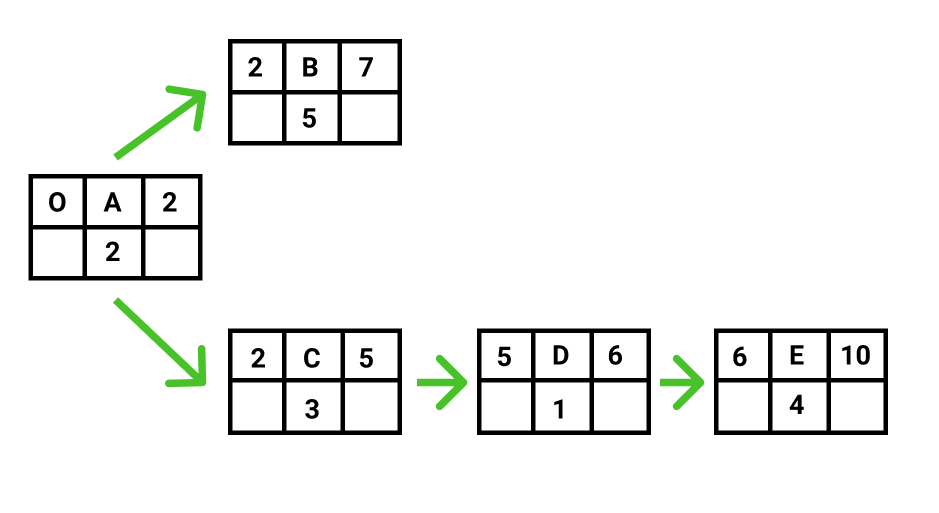
With those values filled in, you’re ready to complete the backward pass to figure out your late start and late finish values. You’ll start with the grid furthest on the right by moving your project duration (10 days) into the lower right quadrant of that grid to represent the late finish.
Remember, with a forward pass, you moved left to right through the diagram to add the duration to your early start value. But, with a backward pass, you do the opposite — moving right to left, subtracting the duration from the late finish date.
For example, starting with the grid to the furthest right, you’d subtract four from 10, and then enter that answer (which is six) into the lower left quadrant of that grid.
Then, that six moves to the lower right quadrant of the next grid, and you’ll subtract the duration (which is one) from that, to get your answer of five.
You’ll repeat that as you move through the diagram, but keep in mind that if you have two grids that feed into one, you’ll move the smaller value into the next grid. That’s opposite of the forward pass, where you move the larger value.
When all is said in done, you end up with a project network diagram that looks like this:
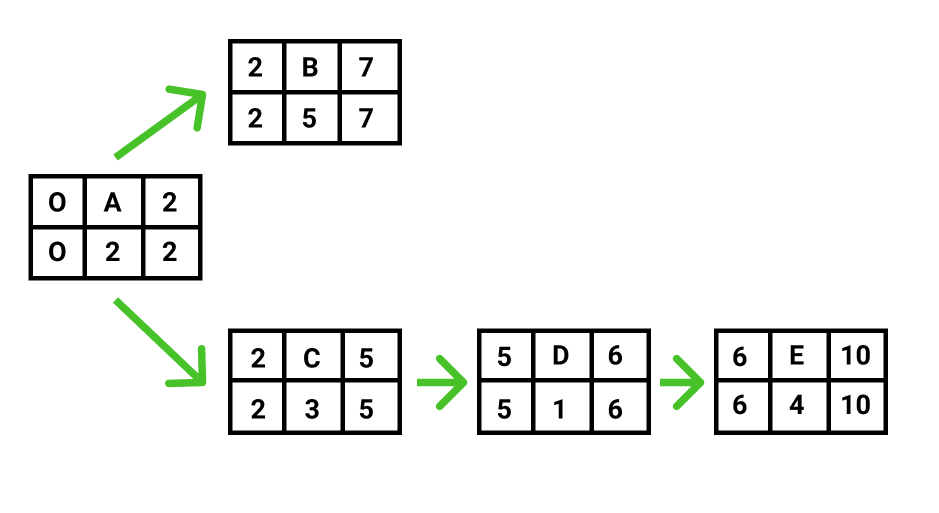
To find your project’s critical path, a backward pass needs to be completed first. Now that you’ve finished both your forward pass and backward pass, the critical path is easier to spot.
Just look for the longest string of project activities where the early finish and late finish dates (the two right squares of the grid) are the same.
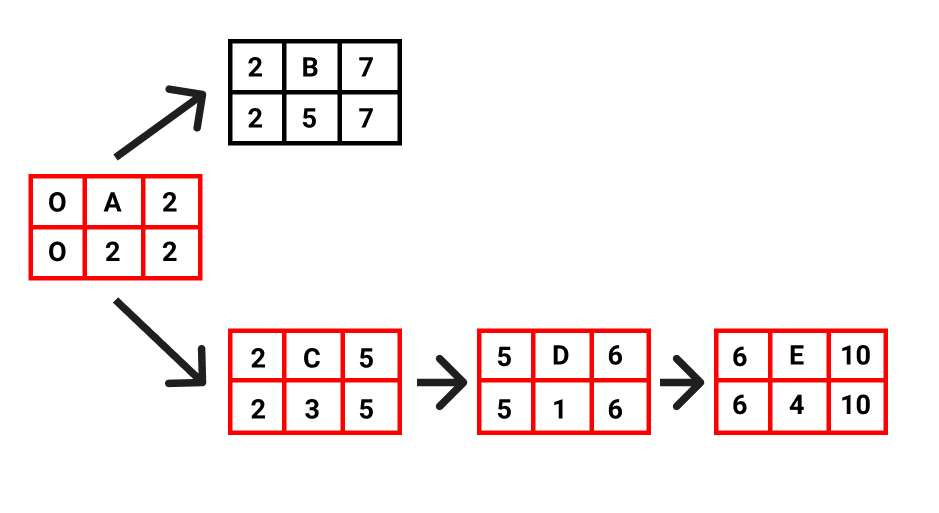
Now you know that, if you hit a snag or delay along that critical path, it’ll extend your entire project’s duration.
This is a very simple example, and your values might not be the same across the board. But hopefully it illustrates how these calculations can help you understand where you have wiggle room in your project timeline and where you need to stick to the schedule.

Artem Gurnov
Artem is a Director of Account Development at Wrike. He previously held the role of Project Manager, overseeing a team of customer success managers (CSMs). Over the years of building teams and scaling business processes, he has successfully deployed multiple projects, from automating client outreach to setting up work prioritization tools for sales reps and CSMs.

